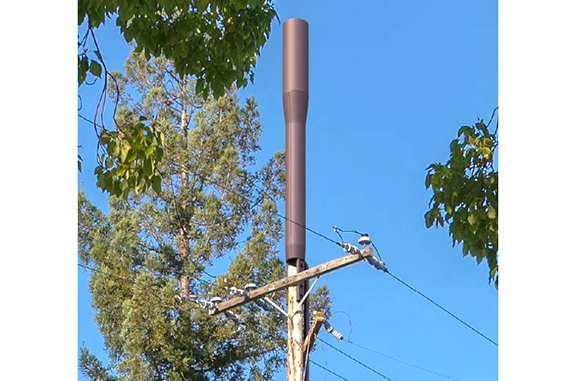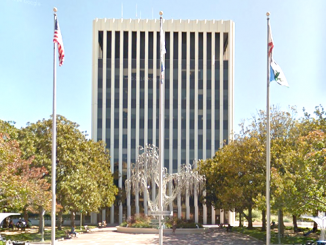
BY ELAINE GOODMAN
Daily Post Correspondent
As wireless companies look to install more small cell antennas or “nodes” to improve wireless service, the Palo Alto City Council next week will consider restrictions aimed at minimizing the equipment’s presence in neighborhoods.
The rules, which the council will discuss on Dec. 16, would apply to wireless communication equipment attached to streetlight poles or wood utility poles in the public right of way.
The proposal states the city’s preference for placing the wireless equipment outside of residential areas. However, a wireless company could still apply for an exception to install equipment in residential zones.
“Establishing the new standards may result in community members having a false expectation that WCFs (wireless communication facilities) would be banned from residential districts,” City Manager Ed Shikada said in a report to the City Council.
The proposal includes a mixture of standards that would be absolute restrictions and others for which exceptions could be requested.
For example, the small cell nodes could never be installed within 300 feet of a lot where a public school is located. The nodes would always need to be at least 20 feet away from a residential building.
‘Zone of exclusion’
And in cases where a small cell node is allowed on a wood utility pole in a neighborhood, a “zone of exclusion” would keep the equipment away from the center portion of a home’s street frontage.
“The purpose of this standard is to limit the potential for a WCF to be located centrally in front of a residence, preferring instead to locate a WCF nearer the corners of parcels to reduce the visual impact,” the report to council said.
In a less ironclad standard, wireless companies asking for an exception to place equipment in a residential neighborhood would be encouraged to go for installation on wider, more heavily traveled streets rather than narrow streets where the nodes might be more noticeable.
The proposed standards would require at least 600 feet between small cell nodes, although one utility or streetlight pole could potentially house multiple nodes. The report notes that the council could opt to increase the minimum distance between nodes — but that would likely result in more applications for exceptions.
Planning ahead for 5G
For most small cell networks being requested, at least one exception from the standards would be needed, according to the report. The small cell nodes are intended to improve wireless service and to eventually accommodate 5G, the next generation of wireless technology.
Another situation where an exception would be needed is when the proposed small cell node wouldn’t meet the city’s design standards for either underground installation or installation on top of a pole.
The report to the council acknowledges that some residents don’t like the pole-mounted equipment. But undergrounding the equipment often doesn’t work, in part because it is too noisy, the report said.
Another standard would require a new streetlight or wood utility pole when a small cell node is proposed in the public right of way.
“The new pole would be taller and have a consistent and uniform appearance as opposed to having a bayonet extension attached to the top of an existing pole that then must be screened with a shroud,” the city’s report said.
Palo Alto and other cities are receiving a growing number of applications to install the small cell nodes.
In May 2018, the Palo Alto council approved Verizon’s plan to install 11 small cell nodes on Louis Road, Elbridge Way, Loma Verde Avenue, Kenneth Drive, Stone Lane, Colorado Avenue and El Verano Avenue. The approval came despite residents’ concerns about the appearance and safety of the pole-mounted equipment.
Cities limited by FCC
City officials say they can only do so much to restrict the placement of wireless equipment due to state and federal law. Under a September 2018 order from the Federal Communications Commission, cities must adopt “reasonable and objective” aesthetic standards for small wireless installations.
In August, the Los Altos City Council approved an ordinance that states the city’s preference for where small cell nodes may be installed. Neighborhoods are at the bottom of the preference list.
San Carlos in February updated its codes regarding the location of small cell nodes, also placing residential neighborhoods at the bottom of its list.



